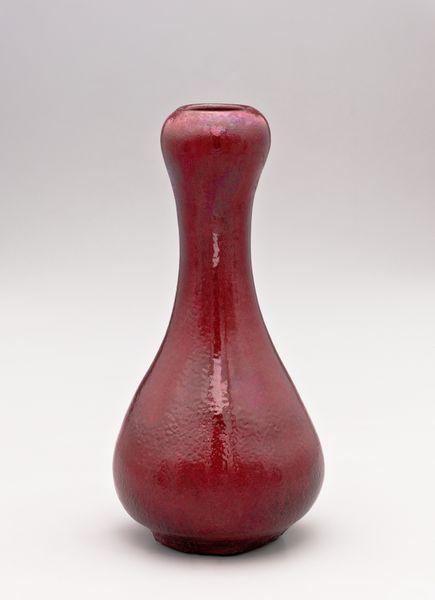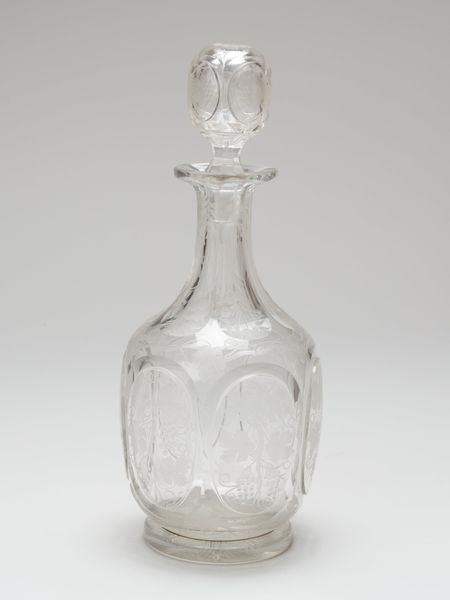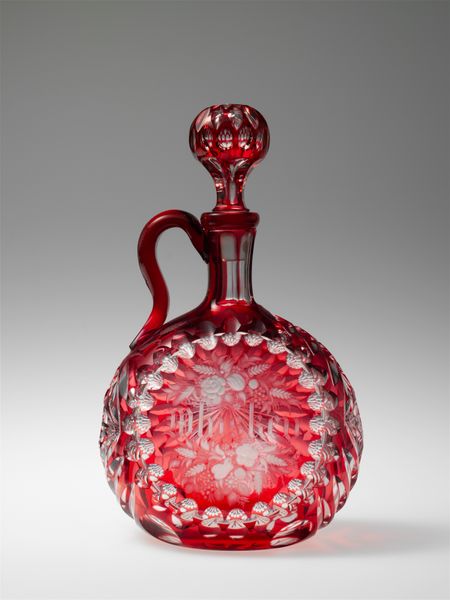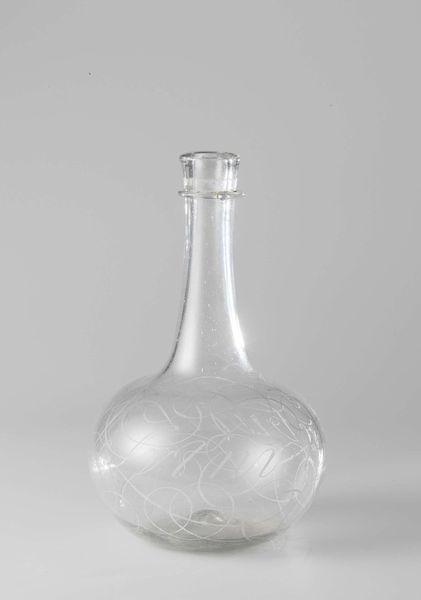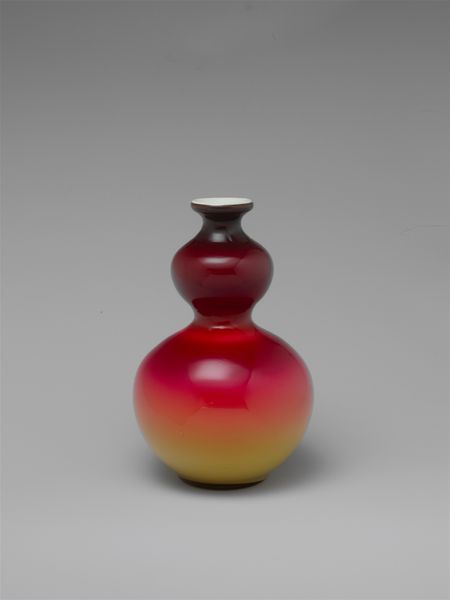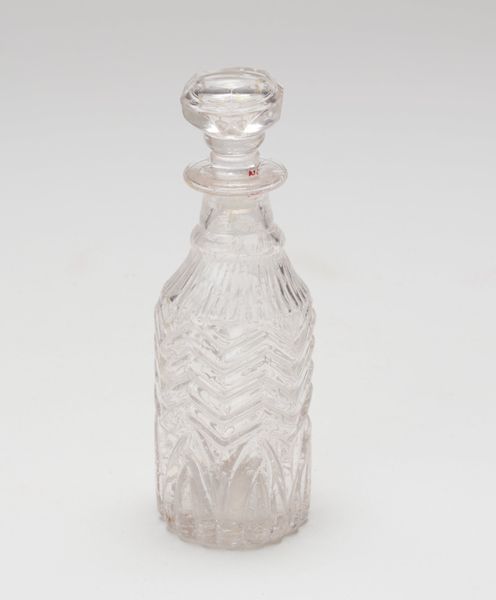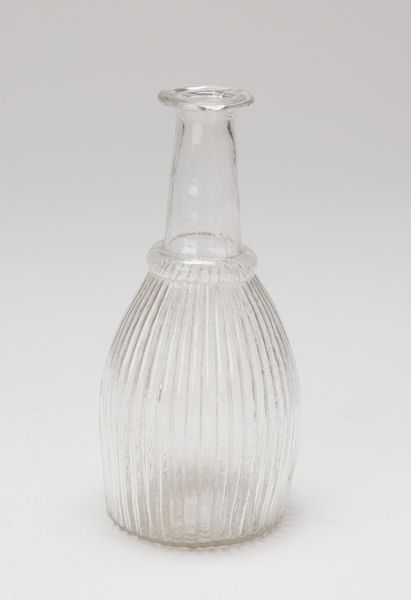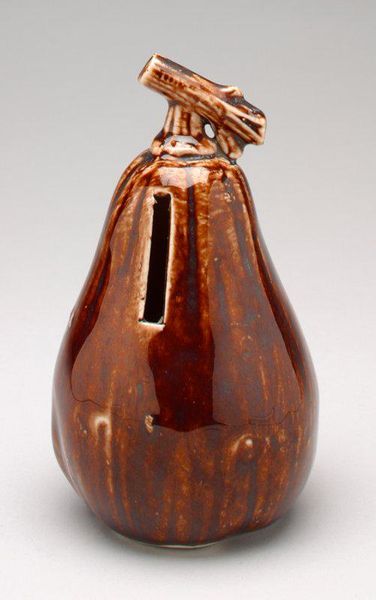
glass
#
glass
#
decorative-art
Dimensions: H.: 34.3 × w. 12.7 × diam. base 10.8 cm (13 1/2 × 5 × 4 1/4 in.)
Copyright: Public Domain
Editor: We’re looking at a striking ruby-red glass “Bottle,” made by the Boston and Sandwich Glass Company, sometime between 1840 and 1860. I find its teardrop shape and intense color immediately captivating. How do you interpret this work within its historical context? Curator: That’s a great starting point. It's impossible to ignore the economic landscape of the time. The rise of industrialization, particularly in glass production, intersects with expanding markets and shifting social structures. This "Bottle" is an assertion of class, an opulent and conspicuous demonstration of wealth and consumption, as well as artistry, intended for domestic display in a parlor perhaps, but did it also reinforce cultural norms of female domesticity? What purpose did it fulfill for its original owners beyond mere function or even decoration? Editor: You’re making me think about how even a seemingly simple object carries complex social messaging. How would the meaning differ based on who owned it—a merchant’s family versus, say, a plantation owner? Curator: Precisely. For whom did it represent accessible luxury, and for whom might it have stood as a symbol of exploitation given the labor conditions in many industries? Also, it might interest you to think about how mass production relates to colonialism through resource extraction and trade networks during that era. Even this beautiful red color could reference particular historical events. What narratives might this object have silently witnessed during its existence? Editor: Wow, that’s so much more than I initially considered. So much meaning tied up in one bottle. I’m seeing now that examining even decorative art like this can offer insights into broader power structures and social issues of the past. Curator: And also invite reflection on the present. The legacy of this object lives on in contemporary issues around consumerism, global supply chains, and artistic labor.
Comments
No comments
Be the first to comment and join the conversation on the ultimate creative platform.

